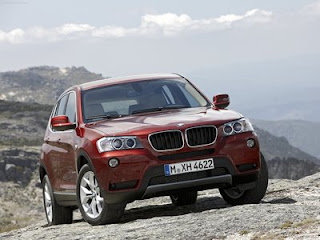Bmw x3
Bmw x3
Bmw x3
Bmw x3
Bmw x3
Bmw x3
Bmw x3
Bmw x3
Bmw x3
Bmw x3
Bmw x3
First, the new model is larger. When compared with its predecessor, the 2011 X3 is 14 millimetres taller, 79 mm longer, 28 mm wider and earns 12 mm more ground clearance.
More significantly, it now rides on a 2,810-mm wheelbase, which is up 15 mm. All of this translates into more interior space, especially for the rear-seat riders, and a larger cargo compartment — it now accommodates 27.6 cubic feet with the seats upright and 63.3 with them folded flat.
So far, so good; however, it’s beneath the brightwork where you’ll find the X3’s more significant changes. While the X3 xDrive28i and its 3.0-litre in-line six (240 horsepower) will be more than enough for many prospective owners, the engine of choice is found in the up-level X3 xDrive35i tested. In this case, the use of BMW’s Valvetronic valve management system — it replaces the traditional throttle by using the intake valves to control engine output — and a twin-scroll turbocharger combine to dish out 300 hp and 295 pound-feet of torque. Decent numbers to be sure, but it’s the fact the torque clocks in at 1,300 rpm that really transforms the drive. It’s such that whenever the driver gets on the gas, the power is there — in an instant.
Part of reason for the alacrity, the complete lack of turbo lag aside, is the new eight-speed automatic transmission (it’s also standard on the xDrive28i). The gear spacing is such that the first six ratios key on performance, while the other two bring an unflustered highway ride and take care of the quest for fuel economy. What really separates this transmission from so many other eight-speed boxes is the fact this one does not hunt and peck between the gears whenever the road begins to undulate. The xDrive35i’s drive is the epitome of seamlessly smooth.
Bmw x3
Bmw x3
Bmw x3
Bmw x3
Bmw x3








Tidak ada komentar:
Posting Komentar